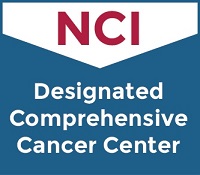Kidney and Bladder Cancer
Approximately 60,000 people in the United States are diagnosed with kidney cancer each year. Click on the questions listed below to learn more about this disease and its risk factors, symptoms, and treatment options.
What are genitourinary cancers?
The term "genitourinary cancers" refers to cancers of the genital tract and urinary tract. The most common genitourinary cancers include prostate cancer, bladder cancer, kidney cancer, testicular cancer, and penile cancer.
What is kidney cancer?
The kidneys are two large, bean-shaped organs located on both sides of an individual's backbone. Kidney cancer, also known as renal cancer, occurs when cells in the kidney grow out of control, clump together and form a malignant tumor.
Is it true that there are two different types of kidney cancer?
Yes. Broadly speaking, there are two parts to each kidney. One is the kidney cortical area, which filters blood and produces urine. The other part is the renal pelvis. Cancer can arise in both areas, though 90 percent of all kidney cancers occur in the kidney cortical area, with less than 10 percent occurring in the renal pelvis.
How common is kidney cancer?
The incidence of kidney cancer has been increasing over the last few years, but one contributing factor appears to be that a lot of these cases are diagnosed incidentally. Patients undergo CAT scans or other imaging studies for other reasons, and the cancer appears. Often, these cancers are confined to the kidney and may not present any symptoms.
What are the risk factors for kidney cancer?
The most common risk factor for developing kidney cancer is smoking. Generally, we associate cigarette smoking with lung cancer and other head and neck cancers, but up to one-third of kidney cancer diagnoses may be associated with smoking. Smoking increases an individual's risk for developing kidney cancer about two to three-fold compared to nonsmokers.
Other risk factors include family history of the disease, obesity, exposure to certain carcinogens, petroleum products and asbestos and certain drugs, medicines, and analgesics (pain killers).
Are men or women more at risk of developing kidney cancer?
Although men used to experience about twice the incidence of kidney cancer when compared to women, this gap has narrowed in recent years.
Are there some people who don't have any risk factors who still develop kidney cancer?
Yes, doctors refer to these cases as sporadic cancer. With sporadic cancer, there is no genetic predisposition for the illness, but people are still diagnosed because of interplay between their environment, diet and exposure to certain chemicals such as exposure to carcinogens.
What are the symptoms associated with kidney cancer?
Because the majority of kidney cancer diagnoses occur incidentally to other conditions, they are usually confined to the organ and do not present many symptoms. Some symptoms of advanced kidney cancer include blood in the urine and pain in the abdomen and flank and a mass or lump near the kidney. However, less than 10 percent of patients experience these symptoms.
What are some of the treatment options available for kidney cancer?
Ablation
Ablation involves a surgeon putting probes into the tumor and heating or freezing it to kill the abnormal tissue, forming scar tissue. It provides a way to treat small kidney tumors without removing the whole kidney. It is the newest technology to be used in the treatment of kidney cancer.
Biological Therapy
Biological therapies, such as Interleukin II, target the body's own system in an effort to energize an individual's immune system to help fight cancer cells. Interleukin II was the first drug approved by the FDA to treat kidney cancer, and until December 2005, it was the only FDA-approved drug for kidney cancer.
Surgery
Surgery has always played a central role in treating kidney cancer, with most patients undergoing either a total nephrectomy (removal of entire kidney and adrenal gland) or a partial nephrectomy (removal of diseased portion of kidney).
Thanks to recent innovations in surgical techniques, surgeons are now using more minimally invasive procedures to treat most kidney cancers. While there are cosmetic advantages to undergoing minimally invasive surgery, the real advantage is the faster recovery and minimal amount of pain that patients experience. For example, if the patient has the traditional, open surgical removal of the kidney or part of the kidney, recovery lasts 6-10 weeks with about seven days of hospitalization. If the doctor is able to perform the operation with robot-assisted or other laparoscopic techniques, the patient can go home the next day and recovery lasts approximately four weeks.
Targeted Therapies
In the past five years, six new drugs have been approved by the FDA for the treatment of kidney cancer. Known as "targeted therapies," these drugs target select blood vessels to disrupt tumor growth and minimize side effects to other areas of the patient's body. Targeted therapies boast limited side effects and relatively high response rates, and are currently being researched to optimize their use in the treatment of advanced kidney cancer.
For an appointment with a kidney or bladder cancer specialist, call 410-328-7904 or 1-800-888-8823



